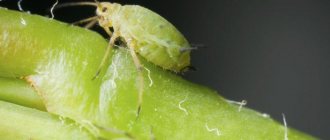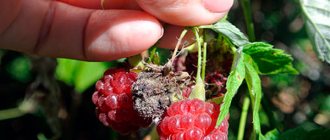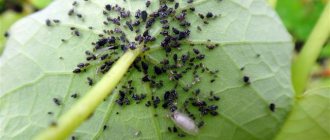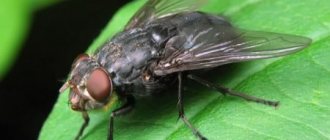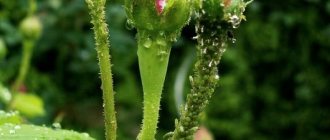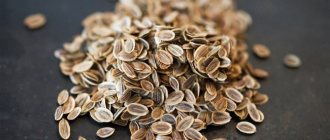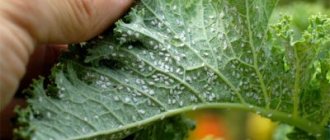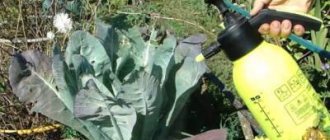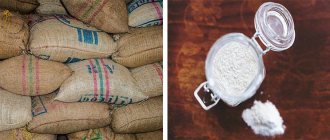Many gardeners who decide to grow grapes on their plots expect to receive a bountiful harvest of sweet berries. And in the process of their ripening, admire the beauty of the grapes filling with juice and the picturesque shoots climbing the walls of the buildings. Unfortunately, the problem of pest control often gets in the way of achieving the desired result. One of the most dangerous and tenacious enemies of this crop is the aphid on grapes, also called phylloxera.
This rapidly reproducing and voracious insect did not leave North America until a certain point. Until in the 19th century it was introduced to Europe and other continents as far as Australia and New Zealand.
A real invasion began, devastating European vineyards. Because the varieties cultivated there were not resistant to this type of pest.
Aphids have also penetrated into Russia, settling in the southern regions where grapes are traditionally grown. At the moment, the vineyards of the Crimean Peninsula, Rostov region, Caucasus, Stavropol, Krasnodar Territory are under threat of aphid invasion.
The fight against aphids on grapes causes a lot of trouble for gardeners. It is necessary to take measures to destroy aphids as early as possible. Better yet, take care of preventative treatment of the vineyard in advance.
This article will talk about how to protect grape bushes from aphid attacks and how to defeat them if an infection does occur.
Causes of midges
There are several probable reasons why insect pests have settled on a grape bush. Sometimes the reason for this is ordinary ants, which use aphids like cows, specially breeding them to produce sweet milk.
There are 2 types of grape pests:
- living above, in the above-ground part;
- basal.
There is also an “intermediate” stage that connects both types. The source of aphids on grapes is wind, mud flow, sometimes these insects come on their own, attracted by the abundance of food. They multiply quite quickly, and if the aphid colony is not destroyed in time, the plants may die. Detection is seriously hampered by the fact that adult insects are inconspicuous and small - rarely exceeding 1.5 millimeters in length.
pad
If a whitish, cotton-like fluff is noticed on the shoots of grapes, it means that the grape bud has settled on the vine. This small pest parasitizes the leaves and shoots of the crop, sucking out the juice.
The fluff protects the clutches of insect eggs that the female lays in the spring. Its fertility is amazing: up to 2-2.5 thousand eggs per season. The pest weakens the shoots, the plants' immunity is weakened, and yields decrease.
For control, grape vines are treated in the spring, before the beginning of the growing season, with the drug “DNOC” (1%), as well as with the agents “BI-58” and “Antio”.
Grape pests are insidious and dangerous, and only proper prevention and compliance with the rules of crop care can prevent crop losses and destruction of plantings.
Natalia Severova
What types of aphids grow on grapes?
Three types of aphids parasitize grape bushes: root (underground), winged or gall aphids, and sexual aphids. They differ in size, appearance, habitats and life cycle.
Root aphids grow and feed below all their lives, destroying the underground part of the bush. Gall galls actively move (sometimes through the air), lay eggs on the leaves (swellings of a specific shape are formed - galls). The sexual form consists of males and females, its task is to carry out the only mating in its short life in order to carry an egg for wintering.
Root variety
Underground insects do not appear on the surface, affecting the roots and lower part of the stem. All of them are females, greenish-yellow or brown (not black) in color. The back is decorated with a pattern of symmetrical dots, and there is a proboscis on the head. Aphids have 3 pairs of limbs and 2 tentacles.
It reproduces by laying eggs. If the female manages to survive the winter, she lays about 800 eggs.
Subsequent generations are not as fertile. Therefore, when destroying the first masonry (by digging up the root zone), the owner can protect the plant and keep its root system intact.
Winged
The form is recognized by its “graceful” physique and the orange hue of its outer chitinous shells. They live above the ground and have rudimentary wings located above the upper (chest) pair of legs. They are called “nymphs” and come from the underground variety.
Getting to the surface, the aphid undergoes 3-4 molts and becomes winged. The length of the body is 1 millimeter, the color is yellowish, with light greenery or ocher. The limbs and tentacles are oblong, the wings are short, with their help “nymphs2” successfully move short distances. This "asexual" variety lays eggs on the undersides of leaves or on the surface of the bark.
See also
Description and characteristics of the Ruslan grape variety, its advantages and disadvantagesRead
The gall aphid got its name from the characteristic swellings that form on the leaf blades, reminiscent of a nut (galls), where it places its eggs. During the growth process, insects actively feed, suck the juice from the greens, destroying the grape bush. Some of the hatched larvae go down to the root: this completes the development cycle.
Sexual
Gall aphids lay eggs of 2 sizes: large ones carry females, small ones – males. This is how the sexual form appears. Its only task is to mate so that the female can lay a special, “winter” egg in a deep crevice in the bark.
How to treat grapes in the spring against diseases and pests: 32 best preparations
| Medicine, folk recipe | Preparation standards | Diseases, insects | Treatment |
| Abiga Peak | 40 g/10 l. | Downy mildew, powdery mildew, bitter rot, marsonina. | At all stages. |
| Albite | 3 ml/10 l. | Powdery mildew. | - Before flowers appeared. — During the formation of fruits. |
| Baktofit | 10 ml/10 l. | At all stages, with a frequency of 1.5-2 weeks. | |
| Bordeaux liquid | 3-4%. | Downy mildew. | Irrigation before and during bud formation. |
| But | 0,15. | Oidium. | Triple spraying during the growing season with a frequency of 10-12 days. |
| Buzzer | 0,5-0,75. | Mildew, Marsonina. | Spraying at all stages. |
| Cumulus | 6-8. | Powdery mildew. | Treatment when symptoms of the disease occur. The minimum interval between spraying is 10-12 days. |
| Cuproxat | 5-6. | Mildew. | Irrigation during the growing season. |
| Kuprolux | 25-30 ml per 10 l. | Spraying at all stages. | |
| Medea | 0,8-1,2. | Powdery mildew, rot, marsonina. | When symptoms of diseases appear with an interval of at least 1-1.5 weeks. |
| Hom | 15-20 g/10 l. | Mildew. | — If symptoms are detected at least 10 days before flowering. - Late flowering. - Appearance of fruits. - When the berries reach the size of a pea. |
| Rapid | 2,5. | Treatment during the growing season at intervals of 1.5-2 weeks. | |
| Profit Gold | 4 g/10 l. | At all stages. | |
| Sporobacterin | 20 g per 100 sq.m. | Mildew, powdery mildew, gray mold. | Processing during the growing season. |
| Score | 0,3-0,4. | Oidium, marsonina and black rot, rubella. | - At the budding stage. - Until the fruit clusters close. - Further with a frequency of 10-14 days. |
| Strobe | 0,15-0,2. | Oidium, downy mildew. | Irrigation during the growing season. Used in conjunction with other fungicides, except strobilurins. |
| Topaz | 0,4. | Powdery mildew. | During the growing season. |
| Tiovit Jet | 30-50 g per 10 l. | Triple spraying during the growing season. | |
| Homoxyl | 15-20 g per 10 l. | Mildew. | — When spots are detected during budding or for prevention 1.5 weeks before flowering. — After the petals fall. - When the berries appear. |
| Horus | 0,6-0,7. | All types of rot. | - Beginning of flowering. — Before picking berries in bunches. — Beginning of fruit coloring. |
| Copper sulfate | For the first treatment - 300 g per bucket of water, for subsequent treatments - 100 g. | Fungal infections. | Any time except the flowering period. |
| inkstone | 500 g/10 l. | Downy mildew, anthracnose. | After removing the cover, before the buds appear. |
| Ridomil Gold | 10 g/4 l. | Mildew. | When symptoms of the disease occur. |
| Quadris | 60-80 ml/10 l. | Mildew, powdery mildew. | Before and after the flowers appear. |
| Colloidal sulfur | 40 g per bucket of cool water. | Before the buds open. | |
| Vermitek | 5-8 ml per 10 l. | Ticks. | Early in spring, during the period of bud swelling. |
| Bi-58 | Ampoule on a bucket of water. | Spider and felt mites, aphids. | Use during the growing season immediately after preparation, then the substance will no longer be effective. |
| Aktofit | 20 ml per 10 l. | Leaf roller, spider mite. | When symptoms appear. |
| Trichodermin | 50 ml/10 l. | Active against more than 50 different lesions. | - Kidney opening. — 3 weeks after initial treatment. Recommended for use after rainfall. |
| Fitosporin | 15 ml/10 l. | Fungal and bacterial infections. | - When the leaves are blooming. — After the buds wither. |
| Mikosan | 100 ml/4 l. | Fungi. | When the first leaves are formed. Not used with other biological products. |
| Ecogel | 10 ml/1 l. | Fungal and bacterial infections. | — Water at the root until greenery appears. — Sprayed after leaves form. |
Signs of vine infection
Aphids or phylloxera are considered one of the most dangerous enemies of grapes. It ends up on the bush, transferred with the wind, soil, water or from other plants (seedlings). The difficulty of detection lies in the fact that the insect has a complex life cycle and more than one form of development; it moves up and down the bush, destroying leaves and roots.
The underground species is difficult to identify due to its “secrecy” and the small size of the aphid. The gall form leaves marks on the leaves - this is what it parasitizes on. The foliage withers and becomes covered with growths. In general, any unnatural, depressed state of the vineyard is a reason to think about the presence of unwanted “guests”.
Crop protection methods
Methods of protection against raids depend on several factors: the location of the garden, the birds that live in the area of the summer cottage, and your ability to create protective equipment. Among all the ways to protect sweet bunches, there are 2 types:
- Isolation of grapes.
- Scaring off robbers in the following ways: optical, visual,
- sound,
- combined.
Before scaring off thieves, professionals advise placing several drinking bowls at your summer cottage. Perhaps the small birds, who only want to quench their thirst, will drink from the drinking bowls and not touch the vineyard. The water in containers must be clean and fresh. It needs to be changed every day.
How do aphids spread?
Introduced with planting material and soil, the “underground inhabitants” begin to reproduce: asexual females lay eggs in the roots so that the hatched larvae can suck the juice out of them, gnaw passages and parasitize on the plant. Some of the juveniles rise to the surface, and this is how the transition occurs to stage 2, the gall stage.
It is possible that the life cycle goes in a different direction: the aphid descends underground to continue reproducing there. In any case, without taking effective preventive measures, the plant may die.
Video
IODSODA = SUPER REMEDY FOR APHIES ..powdery mildew and gray rot.Vselennaya uvlecheniy
APHIDS ARE AFRAID OF THIS LIKE FIRE! The best remedy for aphids without any “chemistry”
201. Safe and reliable remedy for aphids
Aphids - we fight without chemicals!
How to deal with aphids
FIGHT APHIDS! 100% effect!!!
APHIDS ARE AFRAID OF THIS LIKE FIRE THE BEST REMEDY FOR APHIDS WITHOUT ANY CHEMICALS
BAKING SODA IODINE MANGANESE from OIDIUM, MILDEW ANTHracnose.. SPRAYED during ripening of berries
YOU WILL NO LONGER HAVE APHISES SUPER REMEDY
All the Aphids fell off after a cheap folk remedy. Fighting aphids and ants on roses and trees.
Fighting aphids, whiteflies is my 100% method, means.....
THE MOST TERRIBLE PEST ON GRAPES AND METHODS OF COMBATING IT. CICADA. vselennaya uvlesheniy
THE BEST REMEDY FOR APHIDS! THERE WILL BE NO MORE APHIES!!!
Oidium Vinohrada. Drugs and methods to combat it
URGENTLY TREAT YOUR GRAPES WITH THIS MEDICINE AND THERE WILL BE NO DISEASES
Iodine against mildew in the vineyard
Fighting aphids with folk remedies
APHID??? YOU WILL NOT HAVE IT ANYMORE!!!
How do you like the article?
Ivanova Tatyana
Ask a Question
Why is an insect infestation dangerous?
If aphids appear on the grapes, this will not lead to anything good. The unpleasant guest will not disappear by itself, and if it does, it will only completely destroy the entire bush and neighboring plants. The alternation of life cycles (activity in spring-summer and hibernation in winter) makes it difficult to timely identify the source of phylloxera.
It can be underground, in the form of adult insects or larvae, on foliage (in clutches) or winged form, under the bark (in eggs laid for the winter). The voracious pest, despite its miniature size, is capable of causing significant damage to a grape plantation.
Content
- Risk factors
- a) Grape diseases
- b) Insects – pests of grapes
- Agricultural technology for growing grapes
- Preventive treatment of grapes against diseases and pests
- FIRST STAGE
- SECOND TREATMENT
- THIRD TREATMENT
- FOURTH TREATMENT
- FIFTH TREATMENT
- SIXTH TREATMENT
- As a conclusion
Grape processing is a complex of activities. Working with grapevines comes down not only to pruning and tying, but the main thing is timely preventive treatment against the spread of insidious diseases. Diseases not only cause crop losses, which can reach up to 60-80%, but can lead to the complete death of the vine. On top of all this there are insect pests.
In this material, we will consider a STEP-BY-STEP PLAN for agrotechnical work and chemical treatments, and also highlight the most popular and effective preparations for spraying grapes, and propose regulations for their use.
Chemicals for processing
To get rid of aphids, all methods are good, except extreme ones - cutting down and destroying the vineyard. Gardeners use pesticides by spraying the roots and upper part of the plant, pouring water, and treating with improvised means (soap solution).
Digging up the root zone and partially replacing the soil with sandy soil (aphids don’t like this) are effective. Pruning, removing fragments damaged by the pest, followed by burning in an open place, far from the bush, help a lot.
Fastak
A drug from the pyrethroid group affects the gastrointestinal tract of the parasite. It is not washed away by precipitation after watering. It is harmless to pollinators (bees), and produces an effect immediately after detection and treatment of aphid accumulation areas. Compatible with other fungicides and insecticides.
See also
Description and characteristics of the Ataman grape variety, history and cultivation rulesRead
Fozalon
Available in powder form, it has a specific garlic smell. It has a long-lasting effect and is used at temperatures between 13-15 ºС if other methods do not help.
Aktellik
Chemical of organophosphorus origin. The grapes are treated with the prepared aqueous solution. Helps with relapse of repeated lesions. The disadvantage is toxicity to all insects, birds, and animals.
Kinmiks
Effectively affects adult aphids and young aphids (larvae). Apply during the growing season, once or twice.
Preventative work
In order not to look for a way to destroy phylloxera in vineyards, it is better to take time to attend to methods of its prevention. Individual recommendations are considered working. It is advisable to do the following:
- comply with quarantine conditions for new plants - keep them at a distance and process them before planting;
- in the spring, carry out three treatments using professional insecticides or traditional methods;
- choose varieties that are resistant to aphid attacks;
- use rootstock;
- it is enough to deepen the root system;
- choose suitable soil for planting.
Following these rules does not guarantee the absence of a problem 100% of the time, so you should regularly inspect your plants in order to detect signs of a problem early. Mineral fertilizers help reduce the risk of infection; they must be applied according to a special schedule.
Folk remedies
There are situations when the use of chemicals is undesirable or unacceptable, then traditional methods will help. For them, they use “decoctions” and “tinctures” prepared according to amateur recipes, which are used to water the affected plant.
Soap solution
For 500 milliliters of water, take 2 teaspoons of liquid soap solution, mix, add a tablespoon of sunflower oil. Spray the leaves, stem, and ground.
Tomato leaves
The fragrant leaves of nightshades are not to the liking of the garden pest. 500 grams of tomato tops are poured with 10 liters of water and left for 24 hours. Can be replaced with potato leaves. It is considered an effective remedy for combating aphids, devoid of toxic side effects.
Ash
Harmless to animals and bees, dangerous to aphids. Diluted in water; The above-ground part is treated with the resulting solution and the roots are watered.
Precautionary measures
Working with insecticides in the garden is dangerous for humans, so you must first protect yourself from exposure to chemicals.
Spraying of vineyards is carried out in calm weather, after rain. Protective agents make the foliage vulnerable, so treat the bushes in the evening to avoid burns. Before the procedure, put on personal protective equipment - a mask or respirator, goggles, gloves. Cover all areas of your body, otherwise an allergic reaction may occur.
Spraying solutions are prepared before treatment, but not in advance. Follow the proportions recommended by the manufacturer.
Seasonal preventive measures
At the beginning of the growing season, it is useful to spray the grapes with chemicals, and in the fall, loosen the root zone and trim leaves with traces of the presence of the pest.
Spring
If the lesion is detected at the initial stage, treatment with an insecticide, mechanical removal of damaged leaves followed by burning, and repeated spraying after a few days will be sufficient.
Summer
In July, if the symptoms of the “disease” have not disappeared, they are re-treated with pesticides. Experienced gardeners know that it is not so easy to remove phylloxera, so you will have to spray the grapes often and regularly.
Reviews
I use ash in early spring and fall. This is not a problem for me, since I have a stove for heating in my house. I am very pleased with the result. It’s July now, the bunches of grapes are hanging beautifully, the leaves are not affected by any pests.
Next to the grapes I plant mint, dill and tansy. The smell repels aphids, and attracts ladybugs; they successfully cope with their task - they devour these pests.
I make an infusion of horseradish. I grind its root and leaves, fill a 20-liter container to a third and fill it with water. You need to mix well and let it brew for 2-3 hours. After this, you can spray the grapes.
Scale insects and false scale insects
Various types of scale insects and false scale insects cause enormous damage to grape plantings. There are more than two thousand species of these insects, of which the following are most often found on crops:
- olive;
- palm;
- brown;
- Californian;
- acacia
Insects are very small (up to 3-4 mm), with a shield (shell) of gray, black, orange, brown color. Signs of the appearance of a pest are the formation of scales with an oily coating on the foliage. Larvae, like adults, feed on plant sap. This leads to wilting of foliage, shoots, and ovaries. The larvae secrete honeydew, a sticky liquid on which colonies of sooty fungus form. Plaque clogs the stomata on the leaves, which leads to disruption of metabolic processes.
Scale insects are tenacious and resistant to various chemicals, so it is advisable to prevent this pest from appearing on the site. If signs of insects are noticed, then insecticides are used to spray the vines:
- Aktara;
- Admiral;
- Confidor Extra;
- Bi-58.
In small areas of the vineyard, they practice washing scale insects off the leaves using a rag soaked in kerosene or soap solution. Gardeners treat the vine with products prepared according to folk recipes (infusions of celandine, fern, onions, hot pepper), but they are effective only as preventive measures.
Resistant varieties
For many years, breeders conducted research in which thousands of seedlings were tested. , varieties resistant to phyllosphere were identified
- Muscat Bessarabian;
- Krasnostop AZOS;
- Anniversary of Moldova;
- Vierul-59;
- Kubanets;
- Starting;
- Jubilee Magaracha;
- Risus;
- Golodriga Ruby;
- Muscat Livadia and others.
Reference! Tempranillo is the most susceptible variety to phylloxera.
Grape phylloxera is a very dangerous insect. Every winegrower should know how to detect and manage this disease. Remember that the key to a healthy vineyard, a rich harvest and your peace of mind is prevention against grape aphids. These measures will protect the plantings not only from phylloxera, but also from various diseases caused by fungi or other pests.
Marble Khrushchev
Unlike the May beetle, the marbled beetle has a spotted coloration of the elytra (white patches on a brown background). The danger is posed by beetle larvae - large, up to 5-7 cm, whitish-dirty in color with a dark head. They parasitize on the roots of bushes, destroying grape plantings of any age.
The life cycle of beetles is long, and if in the first year the larvae are not dangerous to plants, then from the second year they begin their invasions, destroying seedlings, roots, and young shoots.
Fighting methods:
- preventive etching of soil using Decis, Aktara, Aktellik;
- introducing granular insecticides into the soil (Grom-2, Bazudin);
- regular digging of soil on the site;
- inspection of compost and manure heaps in which beetle caterpillars overwinter.
